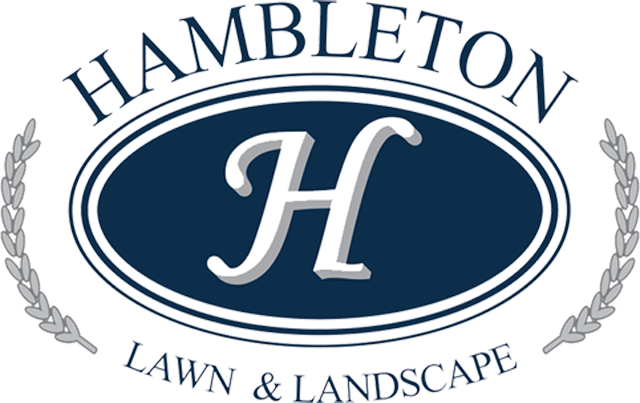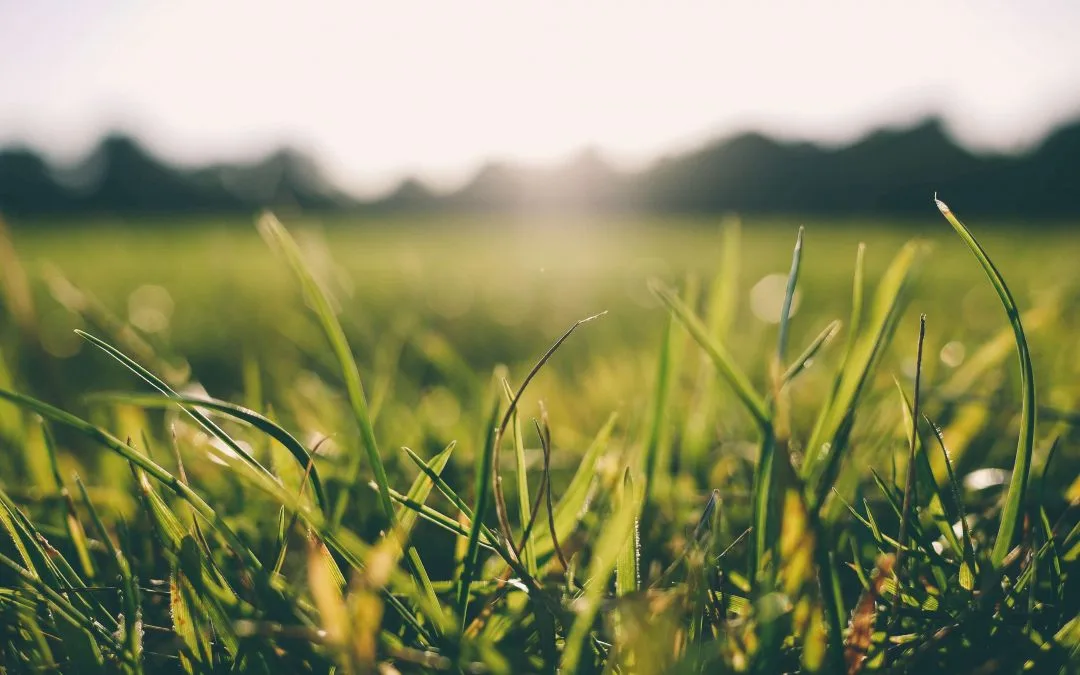Grass is grass, right? Wrong!
There are a multitude of grass varieties – up to 12,000! In fact, there are more than 200 types of Kentucky bluegrass alone—the most popular grass for lawns in the U.S. To help you choose which grass is right for your lawn, please review this Master List of the different types of lawn grass (in alphabetical order).
Basically, there are only two grass types: cool season grasses and warm season grasses. Cool season grasses do best in regions with wet, cold and snowy winter and dry, hot summer. Warm season grasses thrive in regions with mild winters and hot summers (dry or humid.) You’ll see the different classifications as you review this Master List of lawn grasses.
Related: What Are Warm Season Grasses?
Master List of the Most Common Grasses in the United States
- Bahia Grass
- Kentucky Bluegrass
- St. Augustine Grass
- Bermuda Grass
- Rough Stalk Bluegrass
- Wheat Grass
- Centipede Grass
- Rye Grass
- Zoysia Grass
- Fescue Grass

Grass that Grows Well in Virginia
A lovely lawn takes more than regular watering and mowing. It needs the right kind of grass to grow well in Virginia.
According to the Virginia Cooperative Extension at Virginia Tech, “Virginia is what turfgrass managers describe as a ‘transition zone.’”
This means that we have cold winters and hot, dry summers that don’t make for easy choices in lawn grass.
Types of Grass and Hardiness Zones
There are two main types of grass: cool season grass and warm season grass. And there are what are known as U.S. Department of Agriculture Hardiness Zones throughout the United States that outline the general climate and planting standards used to determine which plants are likely to thrive at a given location. Lawn grass seeds, shrubs, flowers and plants should be selected by their optimal hardiness zone numbers so you can see at a glance if these should do well in your area.
Virginia’s hardiness zone numbers range from 5a in the western mountains to 8a on the Eastern Shore. You need to match the type of grass to the season and the hardiness zone to have it grow well in Virginia.
Related: Virginia Planting Zones – USDA Map of Growing Zones
Cool Season Grass that Grows Well in Virginia
Cool season grass performs best in temperatures between 60-75 degrees, and grows actively in the fall and spring. It works well in the Shenandoah Valley and Northern Virginia.
Warm Season Grass that Grows Well in Virginia
Warm season grass grows best when temperatures range between 80-95 degrees. Although dormant in the winter, it is efficient with water, tolerates summer heat, and has few pest problems. Best established mid-May through June.
Related: “Fall” Into Your Cool-Season Lawn: Selecting the Best Grass

Grass That Grows Well in Wet Lawns
Not all lawns are the perfectly-manicured ones of legend. Lawns come in all shapes, sizes, and soil types. Wet soil can provide a particular challenge, so let’s look at some of the types of grass that grows well in wet lawns.
There are a number of reasons why you may have a wet lawn. Grading of the yard can be an issue, and allow water to pool in areas of your lawn. Poor drainage conditions, overwatering, and overly shady regions can also cause water problems.
Why is Wet Soil a Problem for Most Grass?
The ideal soil is moist and well drained, allowing excess moisture to flow away from plant roots and enabling a healthy flow of oxygen to get to the plant roots. Constantly-waterlogged soil can cut off this air supply and choke out the roots.
Care of Grass in a Wet Lawn
If your lawn is shady, grass will generally require less nitrogen and more potassium, so choose the appropriate fertilizer. Also, remove twigs, leaves and branches that fall onto grassy areas. These can aid in retaining water, thus adding to the problem of a wet lawn.
Related: The Best Ways to Grow Grass for a Muddy Yard

Master List of Lawn Grasses
There is “no one size fits all” when it comes to grass that grows well in Virginia. Discover what kind of grass you already have on your lawn, or choose the right type of grass for your needs.
Bahia Grass
Bahia grass is a hard, all-purpose grass with a touch, coarse texture that can be difficult to mow. Its aggressive nature allows it to grow in even poor soil with little maintenance. It is known for its disease and insect resistance. Warm-season grass.
A grass that grows well in wet lawns, or lawns with poor drainage, the Bahia grass is recommended. As a warm-season species, it performs best in summer, especially in USDA Hardiness Zones 7-10. Since it puts down a deep and extensive root system it can also be drought and disease resistant. Wet-climate grass.
Bermuda Grass
Bermuda grass can grow rampant if not kept under control, as it requires little maintenance other than sunlight. It is a resilient grass that grows quickly. Warm-season grass.
A fast-growing turfgrass that can however invade gardens and plant beds. Full sun with poor shade tolerance; best established by sod, sprigs or plugs.
Centipede Grass
If your ground is acidic, with a pH range between 4.5 and 5.5, centipede grass will provide a hardy lawn. It requires a sunlit area and may need a low-nitrogen fertilizer each spring. Centipede grass does not hold up to heavy traffic and cannot tolerate fertilizer containing phosphorus. Warm-season grass.
A slow-growing grass mainly used in the Tidewater region. Average shade and acidic soil tolerance; poor traffic tolerance.
Fescue Grass
Fescue grass is available in several types including find-leaf fescue and tall fescue. Fine-leaf fescue can withstand extreme cold and is drought and disease resistant. It cannot handle heavy traffic. Tall fescue is perennial and grows fastest in the fall and spring. It is also drought and disease resistant although it needs regular watering, but can tolerate traffic. It is good for those who use their lawn regularly. Cool-season grass.
- Fine Leaf Fescues: A high quality, low maintenance choice, but offering poor traffic tolerance. Tolerates shade well and can persist in dry conditions and poor soil. Germinates quickly.
- Tall Fescue Grass: A deep-rooted grass that can tolerate moderate drought conditions. Performs best in full sun to moderate shade. Good for low-to-moderate-maintenance lawns.
Most grass doesn’t like wet soil, although there is grass that grows well in wet lawns, especially during the spring and fall. One such species is the Tall Fescue (Festuca arundinacaea).
It is recommended by the U.S. Department of Agriculture for Hardiness Zones 3-9, which includes Virginia. (See USDA Hardiness Zones map.)
Tall Fescue is a cool-season grass that may experience slow growth in the summer heat and thinning in severe winter conditions. It is moderately well-adapted to poorly drained soils.

Kentucky Bluegrass
The most popular grass for lawns, Kentucky Bluegrass, thrives in full sun, but requires well-drained soil. It must be watered frequently and regularly fertilized, but other than that, does not require much maintenance. It is a cold-hardy variety prized for its blue-green color. Cool-season grass.
A full-sun turfgrass with a dark green color. Slow to germinate; best planted in the early fall. Hybrid bluegrasses tolerate heat and drought best.
Rough Stalk Bluegrass:
One grass that enjoys wet and moderately shady conditions is the rough stalk bluegrass. It does not tolerate full sun, however, and can leave dead patches in sunny lawns. To help it through the hot summers, make sure the ground stays wet. Wet-climate grass.
A combination of perennial ryegrass and rough stalk bluegrass is also an option.
Rye Grass
Found in parks, athletic fields and golf courses as well as lawns, rye grass grows quickly and remains green with plenty of sun and consistent rain or watering. Can withstand traffic. Cool-season grass.
- Perennial Rye Grass: A bunch-type grass for use in full sun and moderately-shaded lawns at higher elevations. Fast germinating, but not heat and drought tolerant. Works best when mixed with Kentucky bluegrass.
Perennial Rye Grass: Some drainage and sunlight is necessary for perennial ryegrass to flourish. This grass does best in spring and fall, and does not tolerate dry, hot conditions or harsh winters well.

St. Augustine Grass
A tropical, fast-growing grass adapted to the Tidewater region. Excellent shade tolerance. Established through sod or plugs. Warm and wet-climate grass.
Wheat Grass
Wheat grass is a tough grass that can tolerate drought conditions and traffic well. It does not need frequent watering or fertilizer, and with several winter-hardy varieties, it is popular in regions with very cold winters. Cool-season grass.
Zoysia Grass
One of the most tolerant grasses is the zoysia grass. It can grow well in partial sun, although it prefers sunlight, and cool or hot temperatures. A thick grass, it inhibits weed growth. Zoysia grass is a slow-growing grass, but once it takes hold, it is virtually indestructible, even with little care. Spring and fall feedings recommended. Warm-season grass.
A cold-hardy grass that can survive the winter. Slow to establish, but a low-maintenance and dense grass that provides its own weed control. Average shade tolerance and not as drought tolerant as Bermuda grass.
Related: Identify Your Grass

Get a Free Quote From Hambleton Lawn & Landscape
If your lawn isn’t what you want it to be and you need help choosing grass that grows well in wet lawns, contact Hambleton Lawn & Landscape. We will be glad to assess your lawn, soil conditions, shade and zone to recommend the right kind of grass.
We provide a full range of lawn and landscaping services including lawn care, aeration and overseeding for residential and commercial properties throughout Northern Virginia.
Call us for a free quote and a risk-free guarantee on your lawn and landscaping needs!



Comments (0)
Thanks for your comment!
Thanks for your feedback! Your comments have been successfully submitted! Please note, all comments require admin approval prior to display.
Error submitting comment!
There is a problem with your comment, please see below and try again.